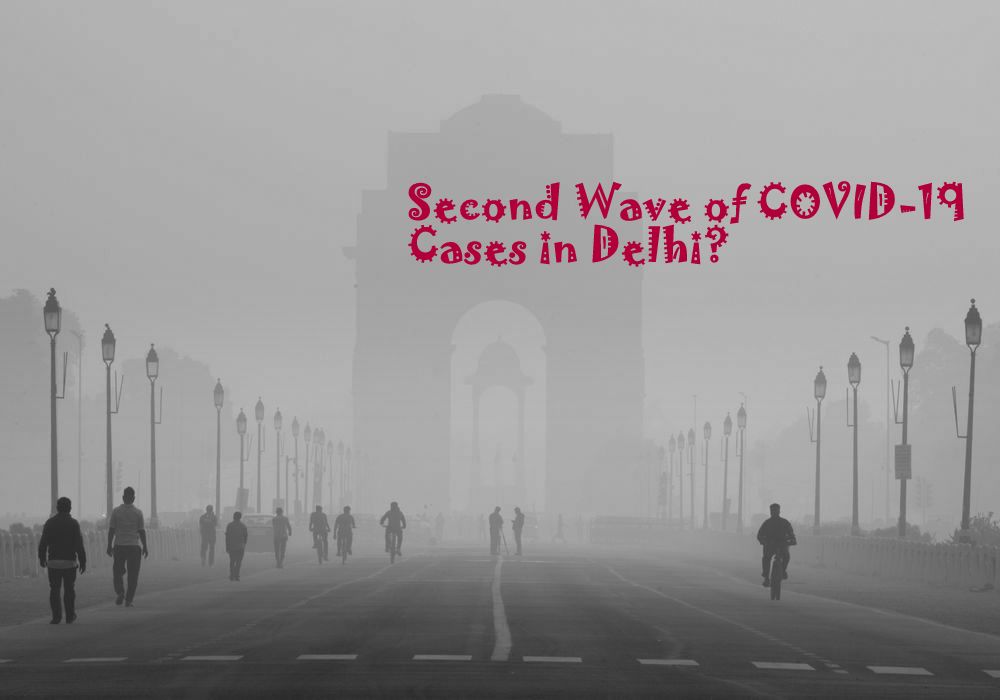Key Points:
- The new wave of coronavirus in Delhi?
- The history of the event in Delhi indicates three different spikes.
- For 13 consecutive days, average cases have increased, from 2,600 on October 12 to 3,660 on Friday.
- Although comprehensive testing improved in the first 15 days of September, the share of RT-PCR tests roughly doubled.
- The rising case rate in Delhi has arrived right at the beginning of the festive season.
New coronavirus wave in Delhi have begun to grow again over the past two weeks after appearing to decline for a second time. In instances, this uptick has come hand-in-hand with a gradual rise in the rate of positivity, indicating that the epidemic may expand again.
An increasing rate of positivity usually indicates that an area is inadequately checked. According to the World Health Organisation, the positive rate could decline to 5 per cent or less if the testing program is adequate and holds the epidemic in check.
That is why enough research is the secret to Delhi being able to monitor the outbreak in the next few weeks and using the right kind of tests.
- A separate third surge in new pathogens:
The history of the event in Delhi indicates three different spikes. The first began in mid-June and increased when during the last week of June, the seven-day total of daily events, also known as the case trajectory, hit about 3,400. This fell by the end of July to around 1,000 a day. For a month, it stayed in that range, and the second surge began near August, lot rising until mid-September when average daily cases reached 4,174, so far the highest case trajectory has been.
For the third time, a strong upward trend is now evident. For 13 consecutive days, average cases have increased, from 2,660 on October 12 to 3,660 on Friday. Days since it started to come under pressure, the growing graph of cases in the city has come right at the heels of the festive season, which is attributed to more individuals coming out of their homes, bad mask discipline, which lack conformity with safety protocols due to exhaustion of Covid.
- Low tests triggered a decrease in spikes between the 2nd and 3rd.
Delhi seemed to make a critical error after the first high finished, and the daily cases went down to 989 (August 5) and the positive rate to 5.8 per cent (August 13), by easing off on monitoring, rather than ramping up more to kill the virus.
This led to a steady rise in the rate of positivity over time and, subsequently, in everyday cases, causing the situation to reach a point on August 26 (XXXX cases, xxx positivity rate), when Chief Minister Arvind Kejriwal called an emergency meeting and agreed to almost double rate of testing from 18,000 to 20,000 regular.
This was a critical intervention — on average, at the beginning of September, only over 20,000 tests were done daily, and by September 20, this was up to almost 60,000 tests — leading to an increase in cases (since more tests were administered) thus taking down the rate of positivity.
For the week ended October 8, the overall positive rating overtime fell to as little as 5.3 per cent.
But after hitting its height, tests began to slip again-daily tests were down to 47,612 for the week ending October 9, from the September 20 peak of nearly 59,300. October 9 was the same day that the trajectory of the event plummeted to its lowest, 2,570 new incidents a day.
When put next to each other, it is apparent that the decline in average daily testing has significantly impacted the reduction in recorded moderate everyday infections.
- Low RT-PCRs contributed to the suppression of numbers:
The major problem was that much of it was through rapid antigen checks, which are affordable, quick to install and offer outcomes within 15 minutes, even as the Delhi government increased its research at the start of September.
As a result, the percentage of reverse transcription-polymerase chain reaction (RT-PCR) experiments, regarded by experts as the gold standard, declined dramatically in the total number of tests.
Although comprehensive testing improved in the first 15 days of September, the share of RT-PCR tests roughly doubled, from 32.3 percent for the week ending September 1 to 17 percent for the week ending September 16.
This may have suppressed the actual rate of positivity since fast checks give strong “false positives” (labelling sick individuals as uninfected).
However, the share of RT-PCR tests has started increasing again. 28.2 per cent of all experiments were RT-PCR in the past week. And because less positive ones are skipped, this growth has overlapped with the increase in daily cases in the area. The reported incidence of false negatives in antigen tests may be as high as 50 per cent, according to Harvard Medical School.
- Increasing levels of positivity lead to a significant issue:
With 7 percent of samples checked in the past week coming back positive (this is the best in almost a month, after 6.95 percent on September 27), the positivity rate for Covid-19 has begun to increase again. The number the week before was 5.88 per cent, and 5.49 percent the week before that.
It went as big as 8.17 percent and 8.23 percent on Sunday and Monday.
The positivity rate is a vital indicator, as researchers believe it demonstrates how prevalent the infection is in the population, which suggests that the disease is circulating quickly when combined with a spike in new cases.
To flatten the curve, testing increased again.
The rising case rate in Delhi has arrived right at the beginning of the festive season. The fact that it is combined with an improvement in the quality of positivity is another indicator that cases could continue to increase.
The silver lining is that testing goes in the desired direction. In reality, three out of the last five days the city has set new milestones for RT-PCR testing, both comprehensive testing and RT-PCR tests have improved.






























